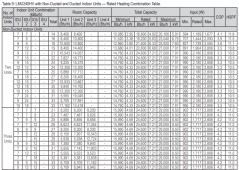Hedges
I See Electromagnetic Fields!
- Joined
- Mar 28, 2020
- Messages
- 20,680
"Charging working temperature 0C to 60C"
"Standard charge 0.5C", "Max charge 1C", "Pulse charge 2C"
This doesn't mean that 0.5C can be done without damage at temperature 5 degrees C or 55 degrees C.
Based on other vendors recommendations, I would expect that to shorten life, and limit either charge rate or temperature at which charging occurs.
"Standard charge 0.5C", "Max charge 1C", "Pulse charge 2C"
This doesn't mean that 0.5C can be done without damage at temperature 5 degrees C or 55 degrees C.
Based on other vendors recommendations, I would expect that to shorten life, and limit either charge rate or temperature at which charging occurs.



